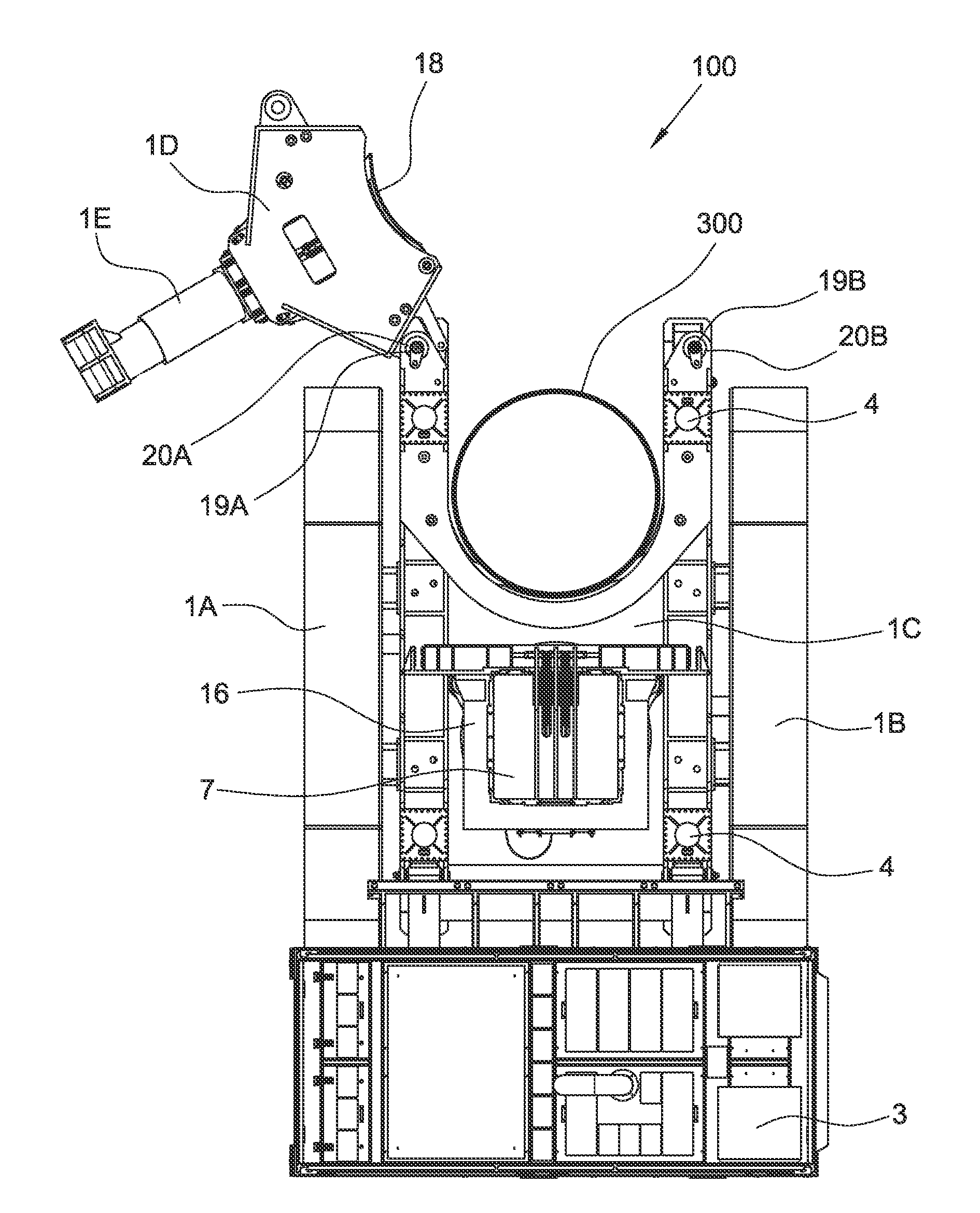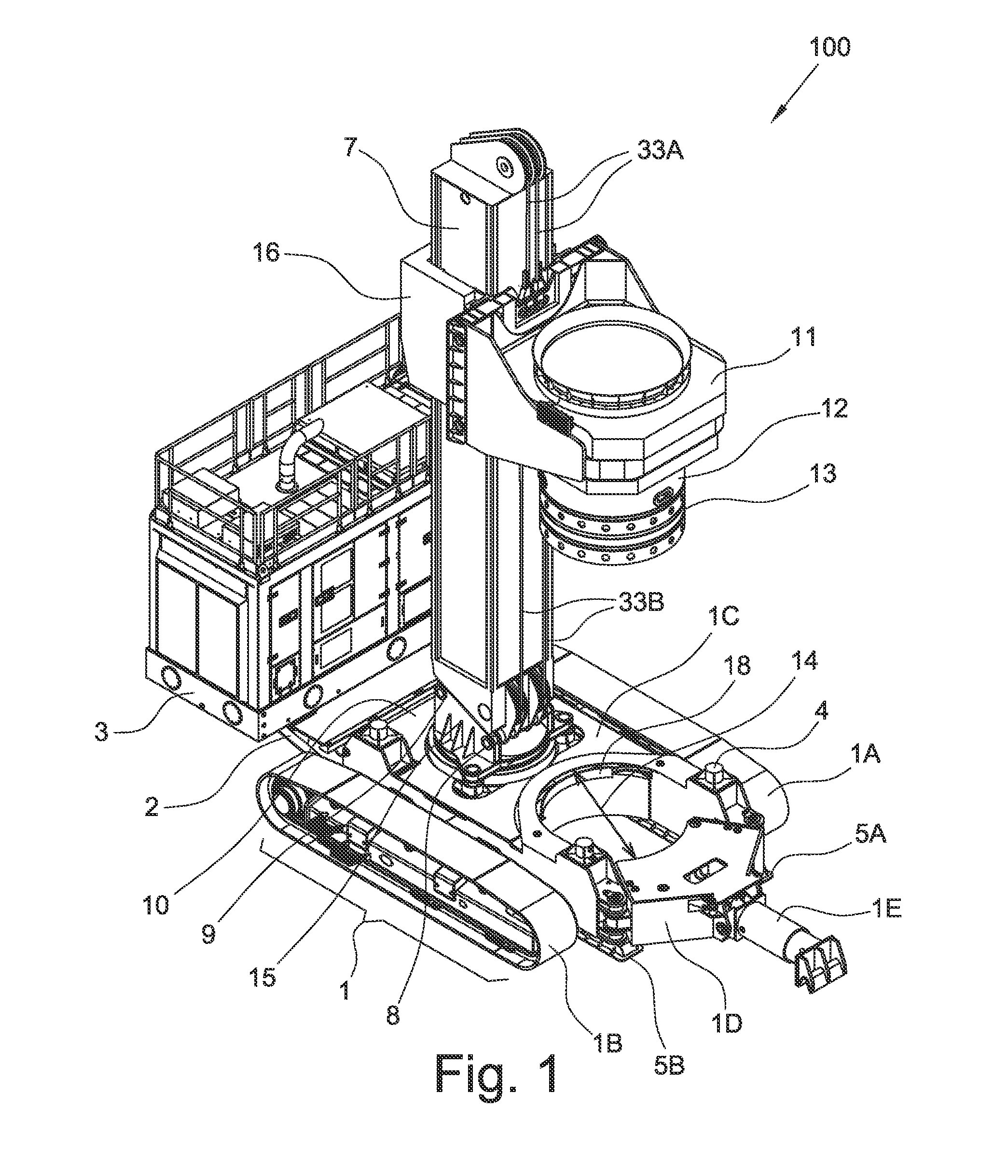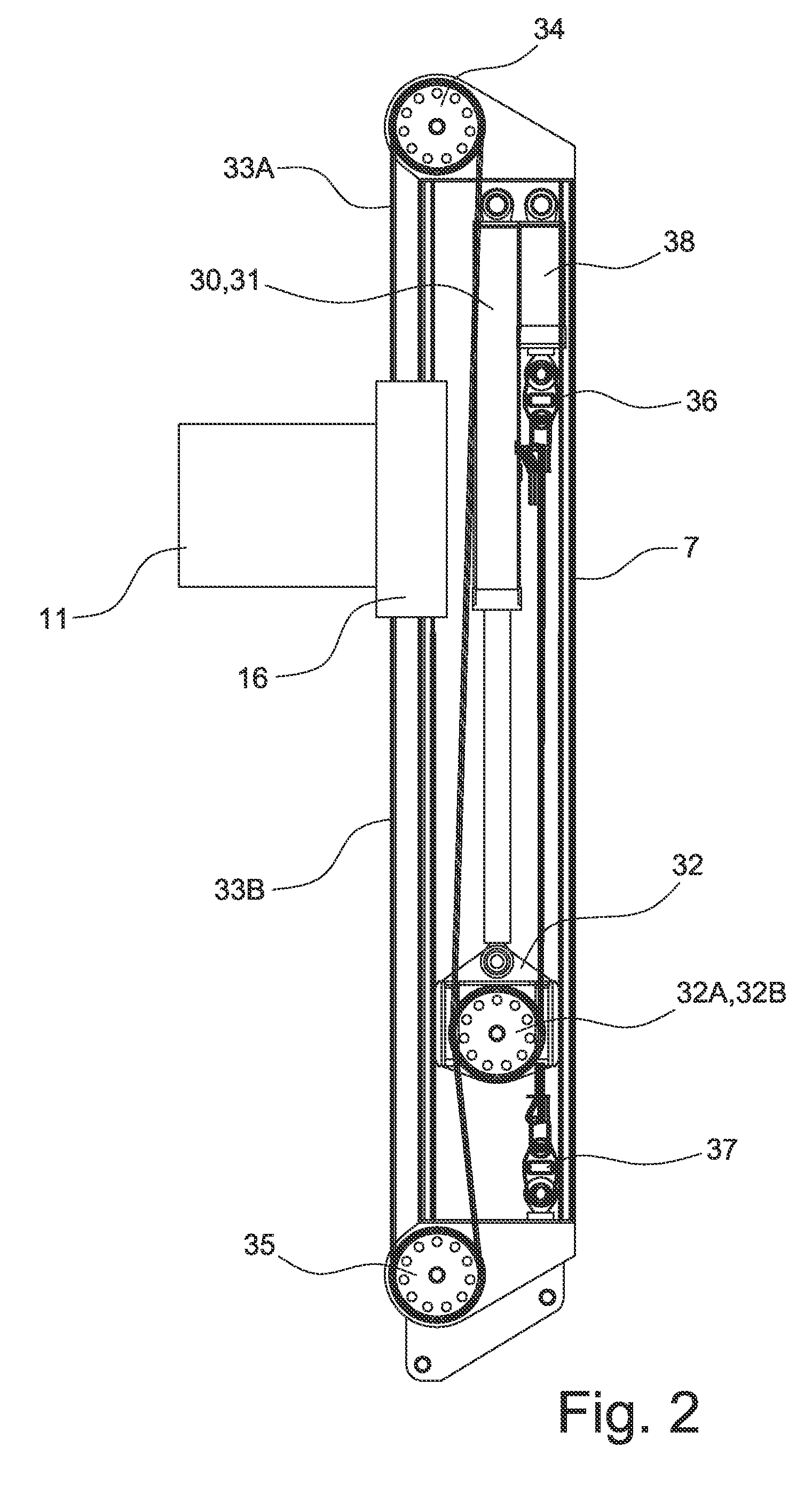Device for deep driving of tubes having a large diameter
a technology of deep driving and tubes, which is applied in the direction of caissons, bulkheads/piles, constructions, etc., can solve the problems of increasing limiting the mobility and speed of the excavation machine, and over-consumption of cement mixture, etc., to achieve the effect of improving verticality, simple and cost-effective, and improving the verticality
- Summary
- Abstract
- Description
- Claims
- Application Information
AI Technical Summary
Benefits of technology
Problems solved by technology
Method used
Image
Examples
Embodiment Construction
[0030]With reference in particular to FIG. 1, an example embodiment of the device for deep driving tubes having a large diameter according to the present invention, or tubing device, is shown wholly indicated with reference numeral 100. The tubing device 100 substantially consists of:[0031]a base frame or truck 1;[0032]at least one guiding tower 7, fixedly connected to the base frame 1 through a tower support 15;[0033]a unit 10 for moving the at least one guiding tower 7;[0034]a tube operating unit 11, able to slide on each guiding tower 7;[0035]a bracketed support frame 2; and[0036]a power group 3.
[0037]In particular, with respect to a middle vertical plane of the tubing device 100 and in the operative condition of the tubing device 100 itself, the tube operating unit 11, the guiding tower 7 and the base frame 1 can be assembled in a C-shaped configuration in which, due to stability and proportioning issues of the structures, the guiding tower 7 is in a slightly backward position w...
PUM
 Login to View More
Login to View More Abstract
Description
Claims
Application Information
 Login to View More
Login to View More - R&D
- Intellectual Property
- Life Sciences
- Materials
- Tech Scout
- Unparalleled Data Quality
- Higher Quality Content
- 60% Fewer Hallucinations
Browse by: Latest US Patents, China's latest patents, Technical Efficacy Thesaurus, Application Domain, Technology Topic, Popular Technical Reports.
© 2025 PatSnap. All rights reserved.Legal|Privacy policy|Modern Slavery Act Transparency Statement|Sitemap|About US| Contact US: help@patsnap.com



